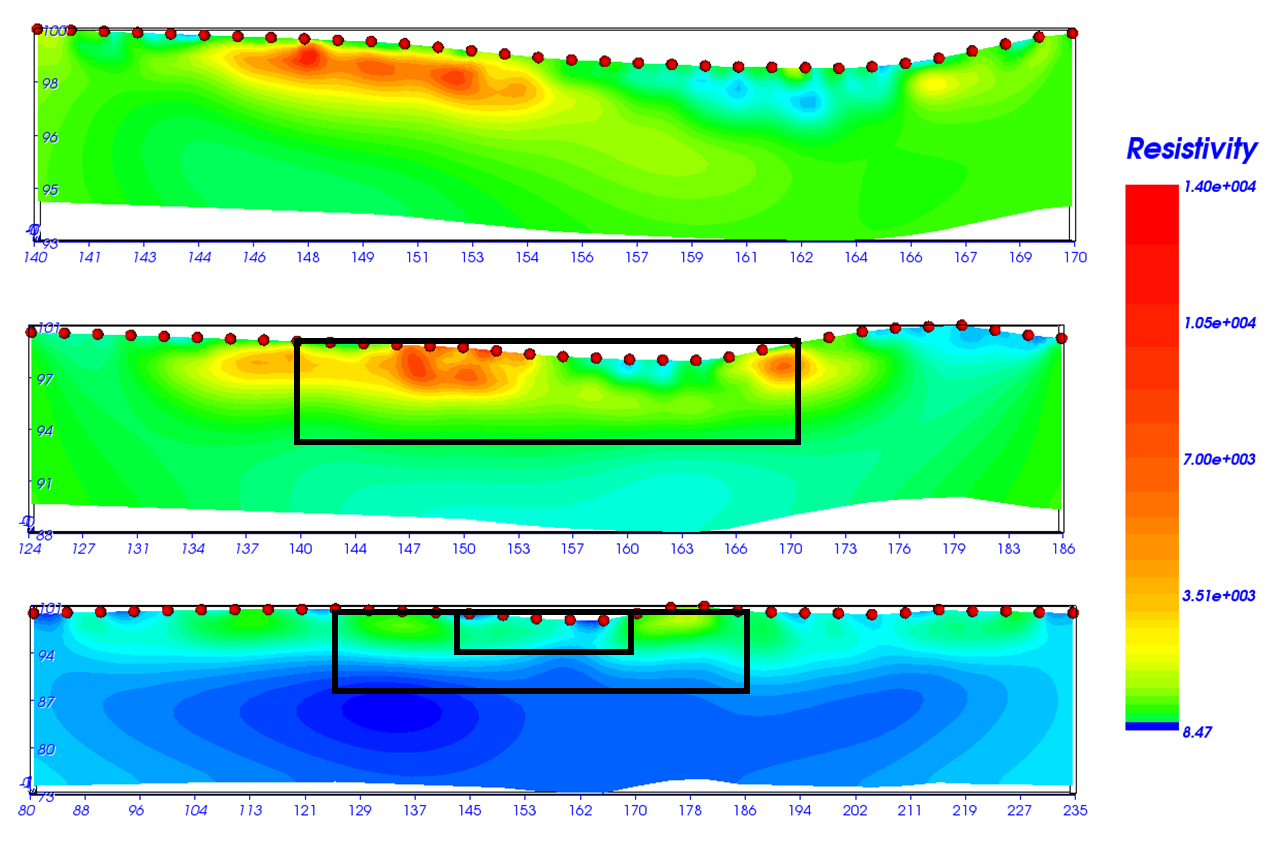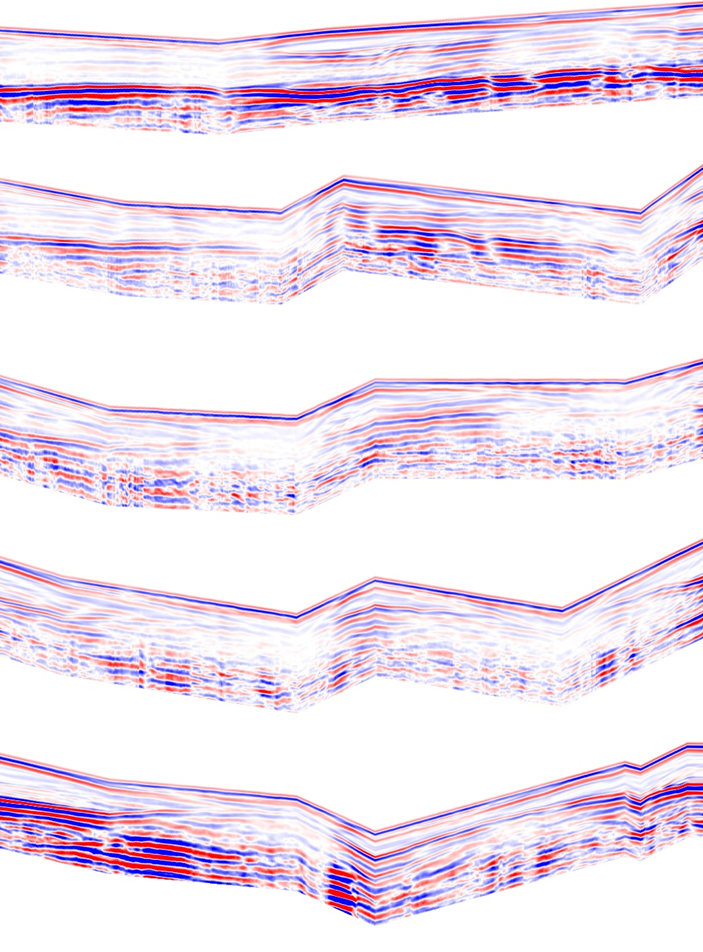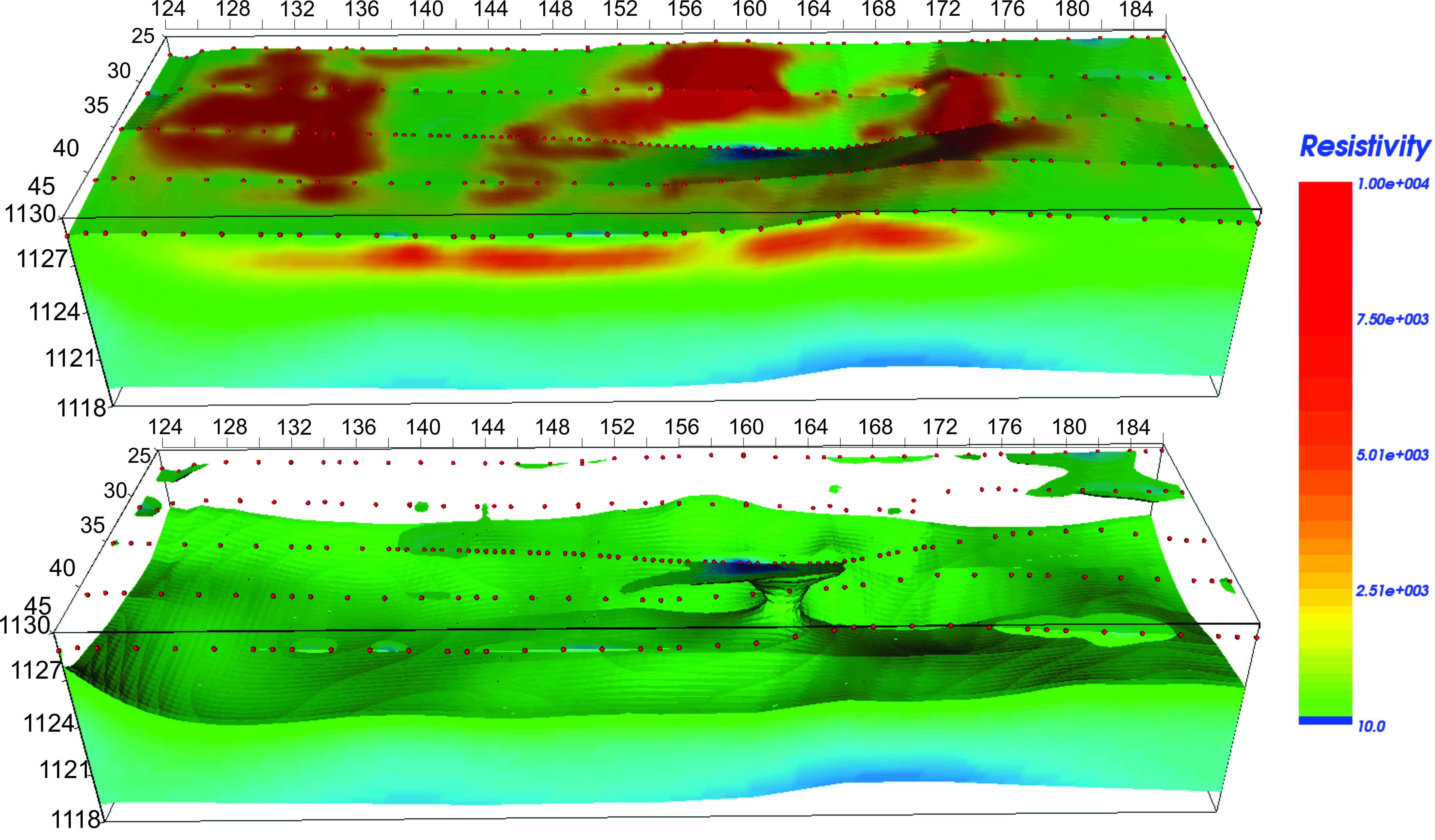|
Ten geophysical survey
lines and one block survey were established
at the mud volcano site, focusing on the
three dimensional subsurface structure of
the features. Dipole-dipole
resistivity lines were performed with a base
electrode spacing of 1m, 2m, and 5m.
GPR lines were performed with 200MHz and
400MHz antennae. The 900MHz antenna
tested at the site produced results similar
to the 400MHz profiles.
Data were processed using
ERTLab64 (resistivity) and Reflexw (GPR).
The resistivity results at small electrode
spacing resolve individual or small
groupings of vent conduits. Some
resolution is lost as the electrode spacing
is increased, but a subsurface zone of low
resistivity (mud chamber) is visible linking
to the surface vents. Three
dimensional imaging of the 2m profiles
clearly shows the structure of the mud
volcano vent.
GPR profiles show a
continuous reflector at a depth of
approximately 1m across the site, broken at
the location of the mud volcano vents.
Additional, stratigraphic texture features
such as crossbedding are apparent in the GPR
profiles, particularly for the higher
frequency (higher resolution) 400MHz
antenna.
|

Resistivity profiles with
electrode spacing of 1m (top), 2m (middle),
and 5m (bottom)
|

Five parallel GPR
profiles over two mud volcano vents
(low-lying area), with the crossbedding
features (top) and the disruption of the
continuous reflector at approximately 1m at
the location of the vents
|

Three dimensional images
of the 2m resistivity profiles over the mud
volcano vent. The vent is imaged as
the open zone of the bottom image by
omitting the features of less than 100
Ohm-m.
|